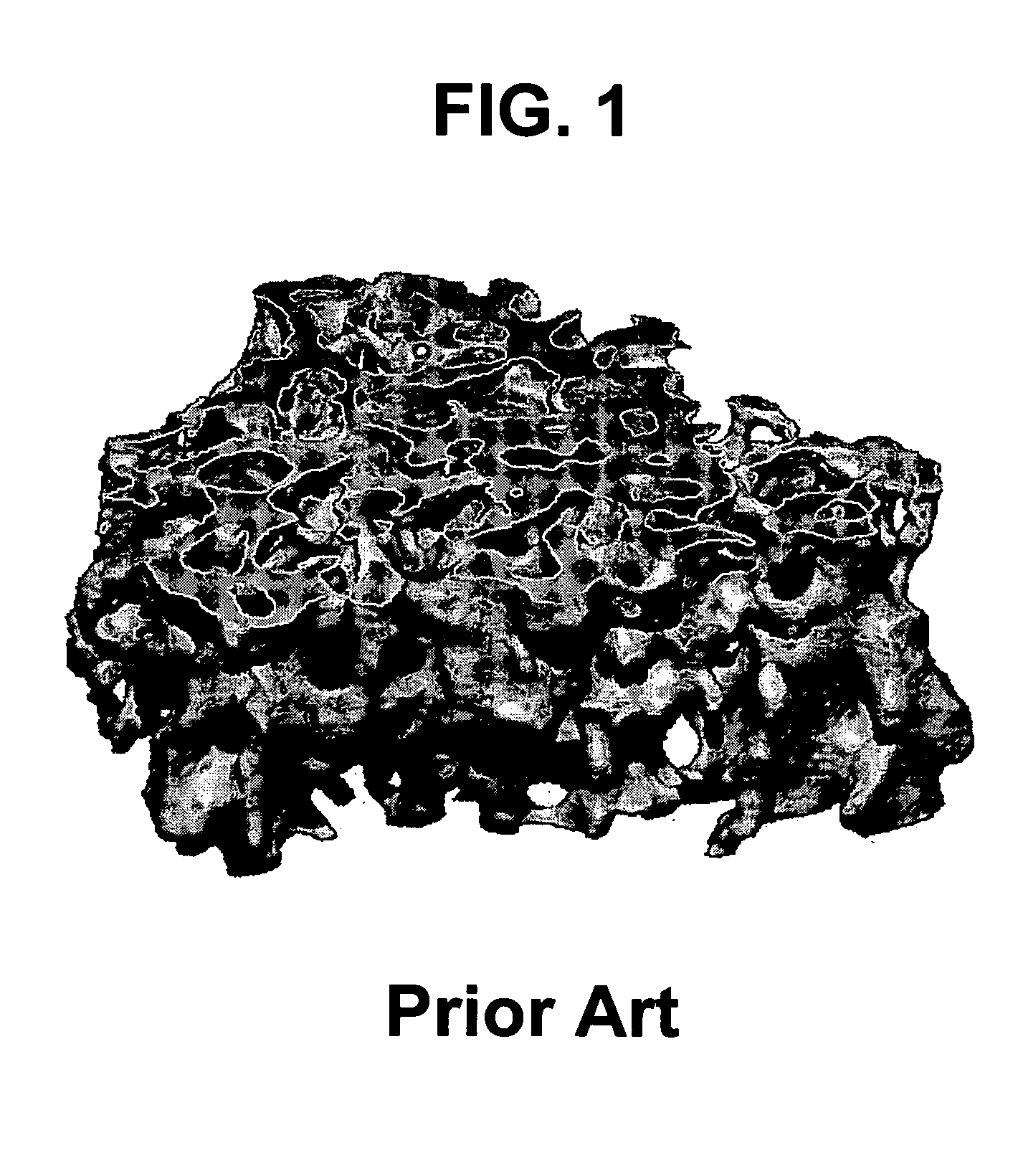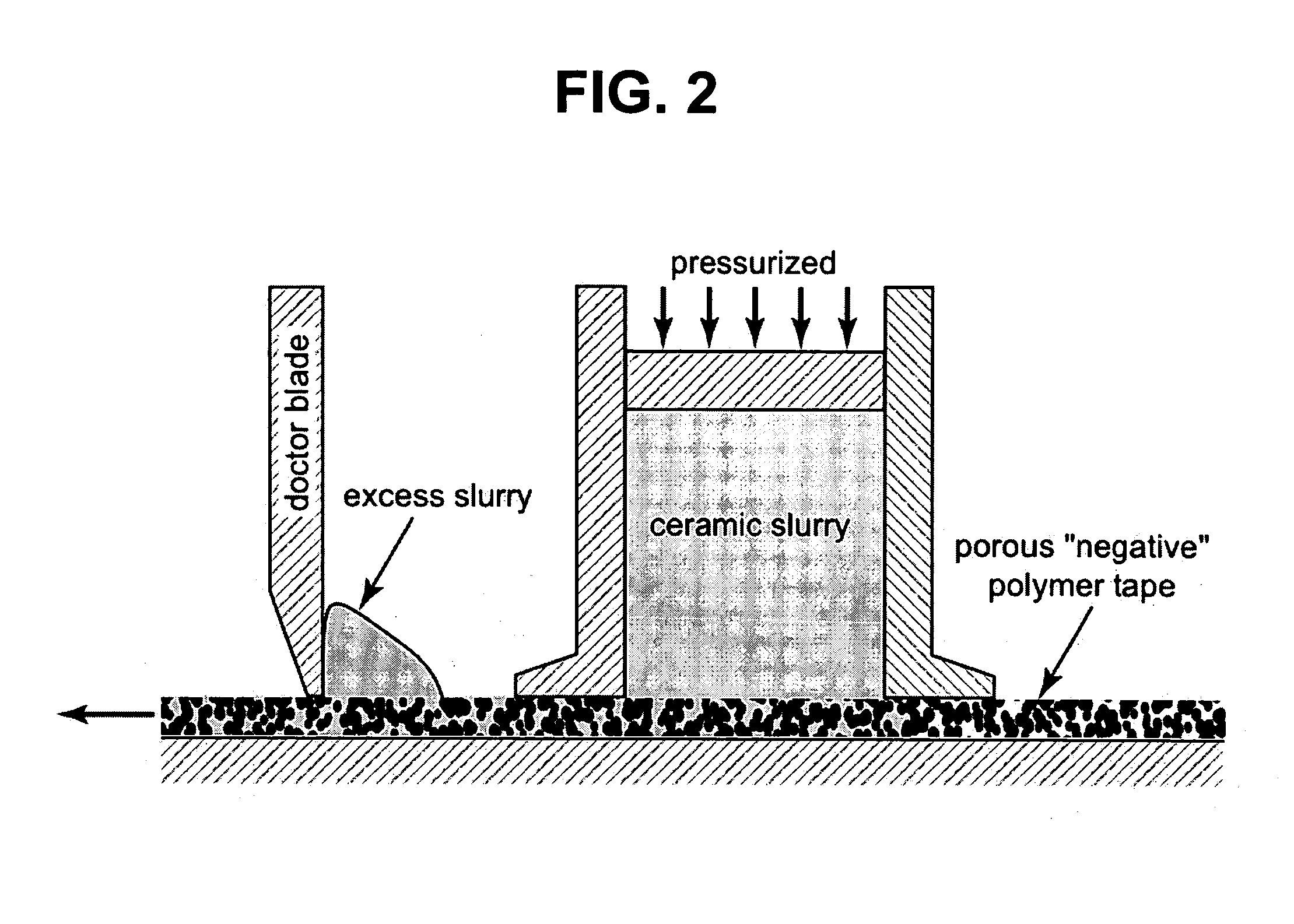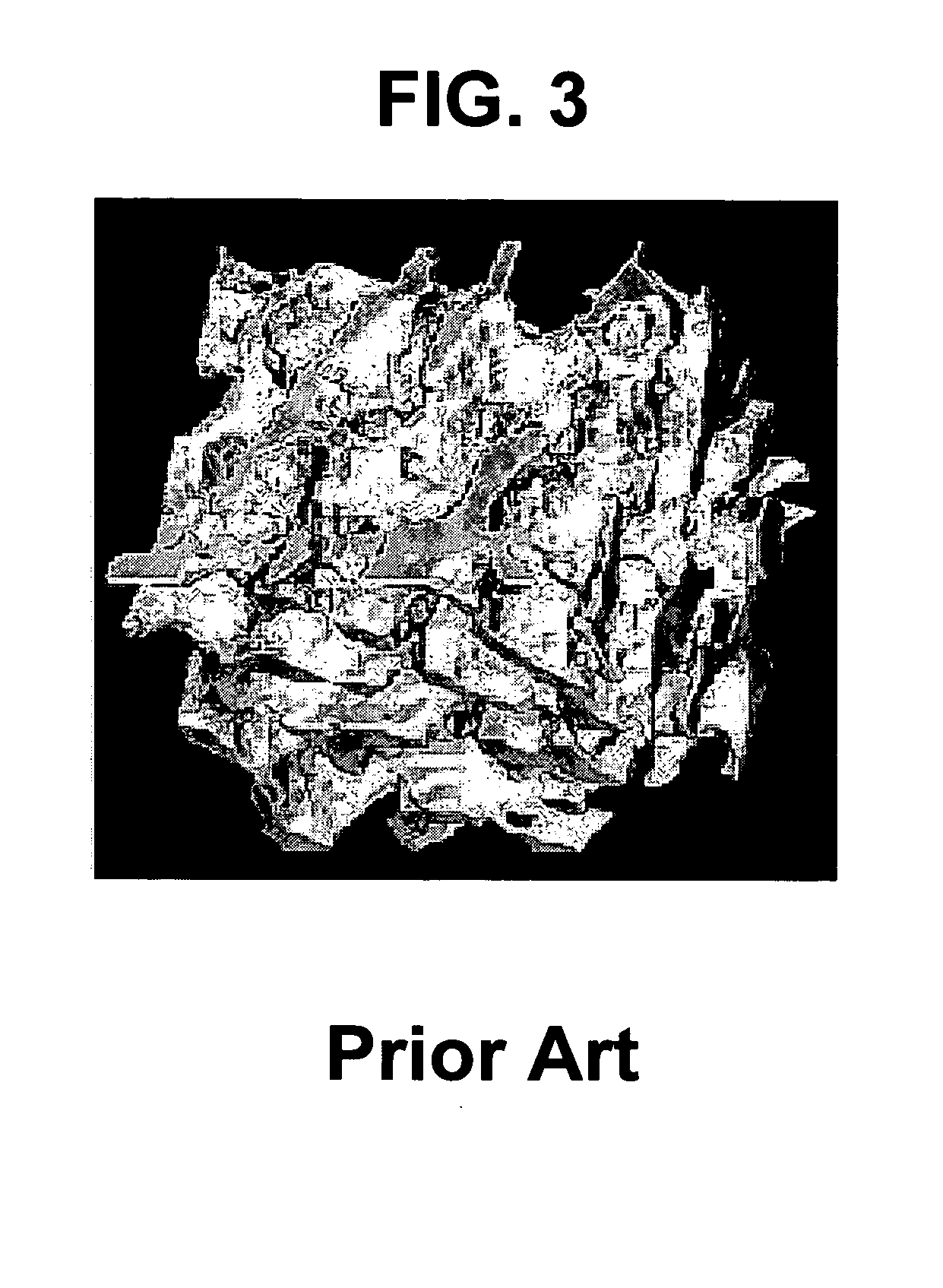Bone and tissue scaffolding and method for producing same
a technology of bone and tissue and soft tissue, applied in the field of bone ingrowth and ongrowth material and soft tissue scaffolding, to achieve the effect of reasonable cost and improved performance of orthopedic implants
- Summary
- Abstract
- Description
- Claims
- Application Information
AI Technical Summary
Benefits of technology
Problems solved by technology
Method used
Image
Examples
Embodiment Construction
[0037] It is advantageous to define several terms before describing the invention. It should be appreciated that the following definitions are used throughout this application.
Definitions
[0038] Where the definition of terms departs from the commonly used meaning of the term, applicant intends to utilize the definitions provided below, unless specifically indicated.
[0039] For the purposes of the present invention, the term “bone in-growth” refers to a material's ability to allow or encourage the formation of bone tissue into and onto a porous scaffold to achieve a strong intimate junction and superior fixation.
[0040] For the purposes of the present invention, the term “bone on-growth” refers to apposition of bone tissue on the surface of a material. It is differentiated from bone in-growth in that the bone does not typically infiltrate past the immediate surface layer.
[0041] For the purposes of the present invention, the term “porosity” refers to a property of a material as def...
PUM
| Property | Measurement | Unit |
|---|---|---|
| porosity | aaaaa | aaaaa |
| porosity | aaaaa | aaaaa |
| porosity | aaaaa | aaaaa |
Abstract
Description
Claims
Application Information
 Login to View More
Login to View More - R&D
- Intellectual Property
- Life Sciences
- Materials
- Tech Scout
- Unparalleled Data Quality
- Higher Quality Content
- 60% Fewer Hallucinations
Browse by: Latest US Patents, China's latest patents, Technical Efficacy Thesaurus, Application Domain, Technology Topic, Popular Technical Reports.
© 2025 PatSnap. All rights reserved.Legal|Privacy policy|Modern Slavery Act Transparency Statement|Sitemap|About US| Contact US: help@patsnap.com



